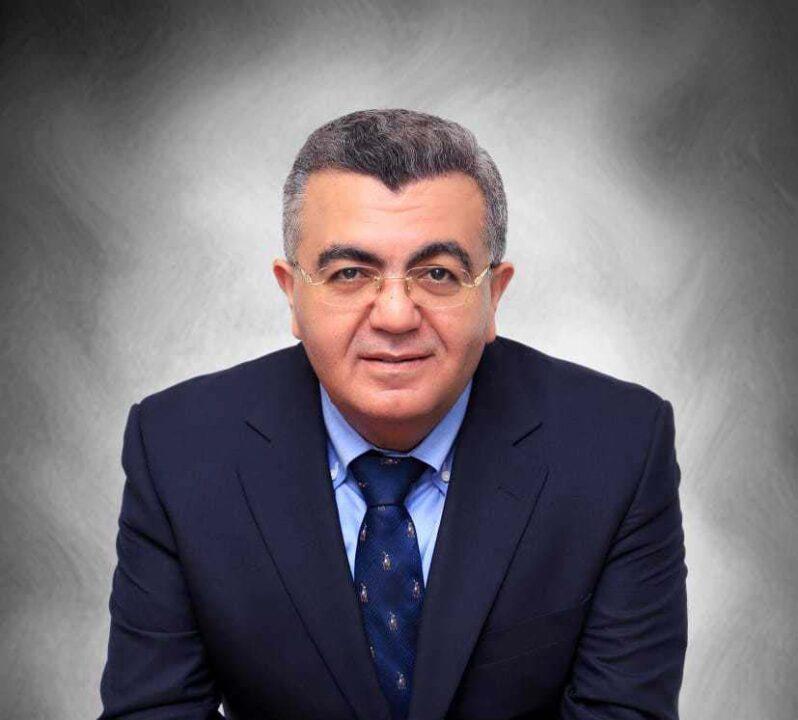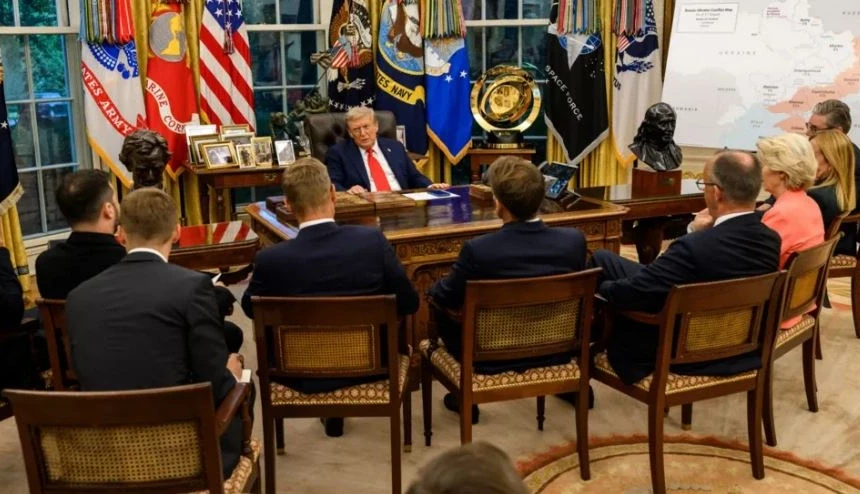Opinion Trump's Secret Map
Trump's map, reinforced by precise intelligence and presented to Ukrainian President Volodymyr Zelensky during his second White House meeting (this time alongside European leaders who had come to Washington to outline a potential peace process), revealed that Russia now occupies roughly one-fifth of Ukrainian territory. The details were so meticulous that Zelensky himself requested a copy.
The map was shocking not only to the Ukrainian President, who sought to contest some of its annotations, but also to the leaders of France, the United Kingdom, Germany, and Italy. None could credibly rely on claims of Ukrainian military“successes,” while all knew full well that Russia had yet to launch a full-scale war, confining itself instead to limited, low-cost operations.
For the White House, the map was an unmistakable message to Kyiv and its European allies: those territories are gone, and it is time to consider a genuine settlement with Putin-before Ukraine itself risks vanishing from the map, should the Kremlin escalate into total war.
The midweek Washington meetings proved even more intriguing, likely reshaping both intra-European and transatlantic alliances. From the moment Trump complimented Zelensky's suit and tie, to Vice President J.D. Vance's affable rapport with the Ukrainian leader, the atmosphere was starkly different from February's disastrous encounter-where Zelensky had been publicly humiliated. This time, he thanked Trump thirteen times in less than ninety seconds.

Dr. Hatem Sadek
The Europeans, long adept at manufacturing crises rather than solving them, showed a different face in Washington. During Joe Biden's presidency, they had succeeded only in entangling the United States militarily and financially in a war on their own soil. But in these new meetings, European leaders adopted Trump's framing of the conflict-recognising, perhaps reluctantly, that the war is European far more than American, and that none of them wished direct confrontation with Russia.
Trump's vision for ending the conflict evolved dramatically. What began in Alaska as a plan for a mere ceasefire became a comprehensive peace proposal, aimed at addressing the roots of the war in line with the current battlefield map and balance of power. Following the Washington summit, this view has now been embraced in Europe: no NATO membership for Ukraine, and acceptance of the formula“land for peace.”
The once-inflexible file of“security guarantees” has also shifted. Putin's position has moved from his“three no's”-no NATO membership, no NATO peacekeeping forces, no European troops in Ukraine-to a readiness to accept American guarantees for Kyiv and paid-for US military support for the Ukrainian army, without any American boots on the ground. This was underscored by a leaked Financial Times document in which Ukraine offers Washington a massive $100bn arms deal to secure US guarantees-funded by European states and including at least ten Patriot air-defence systems to shield Ukrainian cities.
Beyond that, Kyiv has floated a $50bn joint project to co-produce drones with American firms, leveraging Ukraine's extensive wartime expertise. Unsurprisingly, the proposal was carefully aligned with Trump's own priorities.
Still, these guarantees may prove internationally thorny. The scale of Washington's commitment remains uncertain, and domestically, such guarantees could be politically fraught for Trump. Where exactly would his administration draw the line on obligating US forces to maintain“peace” in Ukraine?
The official group photo taken at the White House on Monday confirmed what many suspected: Trump had scored a major victory over his European counterparts. The message was blunt:“Those who want to fight Russia must fund it themselves. Those who want peace must reckon with the real balance of power-not historic claims or geographic sentiment. As for Trump, he is a dealmaker, not a warmonger. He is in a hurry to secure a Nobel Prize, and time is running short.” He knows full well that without US financial and military backing, the Russian army's path could extend far beyond current lines.
Trump's map, presented in Washington last Monday, settled multiple disputes and pulled all parties back to reality: it is power balances, not moral or legal arguments, that dictate outcomes. The rest is cosmetic-designed to preserve a shred of dignity for Europe's leaders. Such, unfortunately, are the laws of politics.
Dr. Hatem Sadek is a Professor at Helwan University

Legal Disclaimer:
MENAFN provides the
information “as is” without warranty of any kind. We do not accept
any responsibility or liability for the accuracy, content, images,
videos, licenses, completeness, legality, or reliability of the information
contained in this article. If you have any complaints or copyright
issues related to this article, kindly contact the provider above.
Most popular stories
Market Research

- What Is The Growth Rate Of The Europe Baby Food And Infant Formula Market In 2025?
- UK Digital Health Market To Reach USD 37.6 Billion By 2033
- Spycloud Launches Consumer Idlink Product To Empower Financial Institutions To Combat Fraud With Holistic Identity Intelligence
- Cryptogames Introduces Platform Enhancements Including Affiliate Program Changes
- What Does The Europe Cryptocurrency Market Report Reveal For 2025?
- Excellion Finance Launches MAX Yield: A Multi-Chain, Actively Managed Defi Strategy






















Comments
No comment